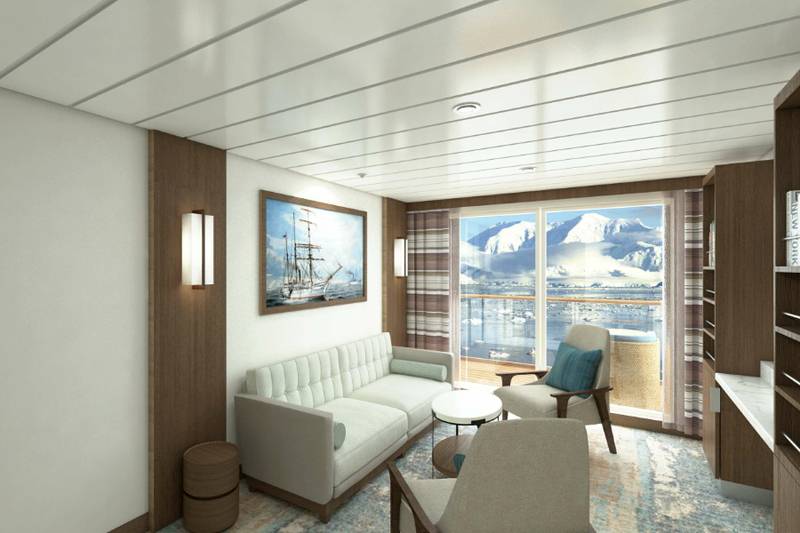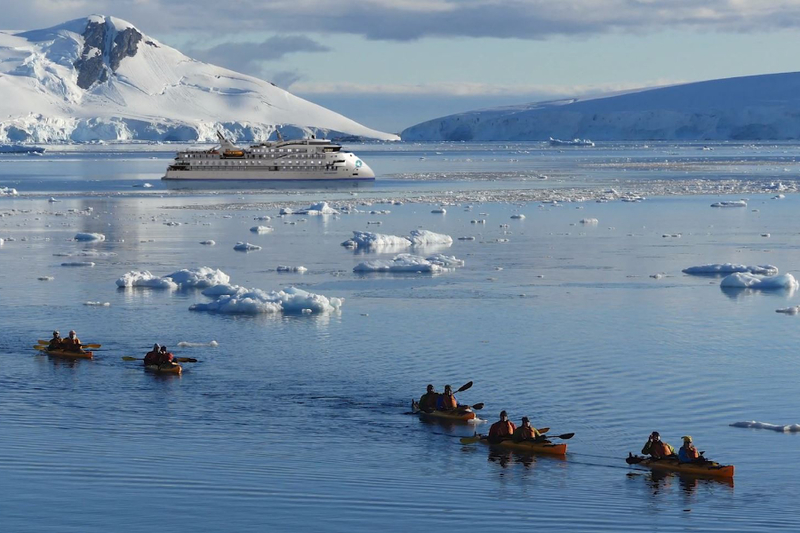In genuine expeditionary style, our itinerary for the following days is heavily dependent on weather conditions and unpredictable sea ice. The following places are some that we hope to visit.
Elwin Bay (Ikpiarjuk)
Situated on the southeastern coast of Somerset Island, Elwin Bay is a breathtaking, wide inlet famous for its wildlife, particularly polar bears. This area was historically used by hunters and today remains an important habitat for bears who hunt along the ice edge and swim between the scattered ice floes. During summer, beluga whales are sometimes seen offshore, and the rocky beaches may reveal evidence of Arctic foxes and seabird colonies. The surrounding landscapes offer stunning contrasts, from rolling tundra to rugged limestone cliffs. Elwin Bay’s rich natural history and raw beauty make it a highlight for wildlife photography.
Port Leopold
Port Leopold, a barren, windswept bay on the northeastern corner of Somerset Island (Inuktitut Kuuganajuk), is steeped in history. Here, the crews of HMS Enterprise and Investigator were forced to endure a harsh winter while searching for the lost Franklin expedition. Their presence is indelibly marked on a rock engraved with "1849" and the ships' initials. The desolate landscape is punctuated by a lone Hudson Bay Company hut, a failed trading post from the 1920s.
We hope to hike and explore the coastline, discovering the historic Hudson Bay Company house and intriguing Inuit archaeological sites. Be amazed by the otherworldly formations shaped by the region’s freezing and thawing cycles, which our expedition team will detail during recap. Nearby, a cairn marks the spot where Ross's rescue expedition left vital supplies.
Prince Leopold Island (Appait)
On the southern side of Lancaster Sound from Beechey Island lie the towering bird cliffs of Prince Leopold Island (Appait), a historic site where in 1848, English explorer James Clark Ross overwintered during the search for the missing Franklin expedition. Prince Leopold Island is the most important bird sanctuary in the Canadian Arctic, with approximately 500,000 birds nesting here in summer. Ringed seals are often spotted on the sea ice around the island and polar bears often lurk nearby.
Radstock Bay
Just a short distance away, Radstock Bay offers a captivating contrast to the open sea. Here, we’ll disembark via Zodiac onto a beach strewn with remnants of the past. Explore the ruins of a Thule village nestled beneath the imposing Caswell Tower, where well preserved stone dwellings coexist with artifacts from later explorers. Witness the stark beauty of this remote bay, characterised by its dramatic cliffs, gravelly beaches, and the scattered remains of whale skeletons that have shaped the landscape and the lives of those who called it home.
Beechey Island (Iluvilik)
At the western end of Devon Island lies Beechey Island (Iluvilik), where we plan to land. Named after Frederick William Beechey, the island is a designated Canadian National Historic Site. During the Franklin expedition of 1845–46, Franklin attempted to sail through the Northwest Passage with HMS Erebus and HMS Terror, with perilous results – three of his men are buried here. Roald Amundsen landed at Beechey Island in 1903, during the first successful voyage by ship to fully transit the Northwest Passage from the Atlantic Ocean to the Pacific Ocean.
Maxwell Bay (Tasiujaq)
Maxwell Bay is a broad, sheltered inlet that offers outstanding opportunities for exploration both on land and by sea. The surrounding tundra landscapes provide excellent hiking, with sweeping views of the rugged coastline and inland valleys. Wildlife is abundant in this remote area: muskoxen and caribou roam the open terrain, while polar bears are occasionally seen along the shoreline or on ice floes. The sheltered waters of Maxwell Bay are a haven for marine mammals, including harp seals, ringed seals, and bearded seals. Walruses are sometimes spotted hauled out on the ice or rocky beaches, adding to the rich wildlife experience. Birdlife is also notable, with seabirds such as glaucous gulls and northern fulmars often seen soaring overhead. The bay’s numerous coves and inlets create a sense of discovery at every turn, making it a rewarding destination for Zodiac cruises and shore landings.
Devon Island (Tallurutit)
At a latitude of almost 75° degrees north, we are now truly in the High Arctic. Here, nutrient-rich waters support an abundance of wildlife, giving the area the moniker ‘wildlife superhighway’ of the Arctic. Devon Island (Tallurutit) is the largest uninhabited island on Earth and features stunning geology, with flat-topped mountains and glacial valleys giving Devon Island its unique character. We hope to visit Dundas Harbour to enjoy offers walks on undulating tundra, and perhaps some birdwatching. A dilapidated Royal Canadian Mounted Police outpost and remnants of a Hudson’s Bay Company trading post can be found here. In the bay, walruses are often present.

































